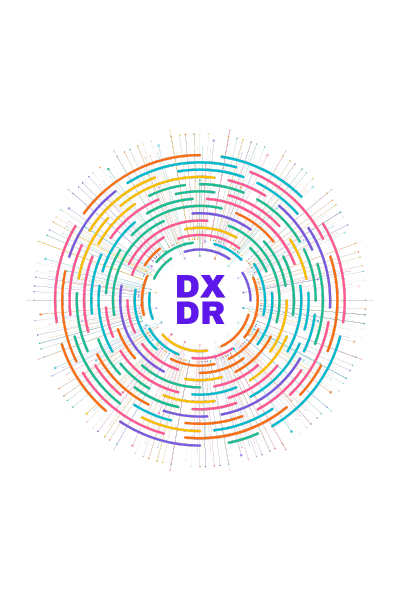A Brief Introduction to Learning Agility

The ability to learn and adapt quickly isn’t something our hiring algorithms typically identify. But by ignoring it, we’re overlooking insightful and innovative job candidates.
I think everyone can agree that the workplace has changed dramatically in the last decade—or is in the process of changing, depending on where you’re currently working. The landscape has evolved. Distributed leadership, project-based work models, and cross-functional solution building are commonplace. In essence, the world is going open.
And yet our talent acquisition strategies, development models, and internal systems have shifted little (if at all) to meet the demands these shifts in our external work have created.
In this three-part series, let’s take a look at what is perhaps the game-changing key to acquisition, retention, engagement, innovation, problem-solving, and leadership in this emerging future: learning agility. We’ll discuss not only what learning agility is, but how your organization’s leaders can create space for agile learning on teams and in departments.
Algorithmed out of opportunities
For the last decade, I’ve freelanced as an independent consultant. Occasionally, when the stress of entrepreneurial, project-based work gets heavy, I search out full-time positions. As I’m sure you know, job searching requires hours of research—and often concludes in dead-ends. On a rare occasion, you find a great fit (the culture looks right and you have every skill the role could need and more!), except for one small thing: a specific educational degree.
More times than I can count, I’ve gotten “algorithmed out” of even an initial conversation about a new position. What do I mean by that exactly?
If your specific degree—or, in my case, lack thereof—doesn’t meet the one listed, the algorithmically driven job portal spits me back out. I’ve received a “no thank you” email within thirty seconds of hitting submit.
So why is calling this out so important?
Hiring practices have changed very little in both closed and open organizations. Sticking with these outdated practices puts us in danger of overlooking amazing candidates capable of accelerating innovation and becoming amazing leaders in our organizations.
Developing more inclusive and open hiring processes will require work. For starters, it’ll require focus on a key competency so often overlooked as part of more traditional, “closed” processes: Learning agility.
Just another buzzword or key performance indicator?
While “learning agility” is not a new term, it’s one that organizations clearly still need help taking into account. Even in open organizations, we tend to overlook this element by focusing too rigidly on a candidate’s degree history or current role when we should be taking a more holistic view of the individual.
One crucial element of adaptability is learning agility. It is the capacity for adapting to situations and applying knowledge from prior experience—even when you don’t know what to do. In short, it’s a willingness to learn from all your experiences and then apply that knowledge to tackle new challenges in new situations.
Every experience we encounter in life can teach us something if we pay attention to it. All of these experiences are educational and useful in organizational life. In fact, as Colin Willis notes in his recent article on informal learning, 70%‒80% of all job-related knowledge isn’t learned in formal training programs. And yet we’re conditioned to think that only what you were paid to do in a formal role or the degree you once earned speaks solely to your potential value or fit for a particular role.
Likewise, in extensive research conducted over years, Korn Ferry has shown that learning agility is also a predictor of long-term performance and leadership potential. In an article on leadership, Korn Ferry notes that “individuals exhibiting high levels of learning agility can adapt quickly in unfamiliar situations and even thrive amid chaos.” Chaos—there’s a word I think we would all use to describe the world we live in today.
Organizations continue to overlook this critical skill (too few U.S. companies consider candidates without college degrees), even though it’s a proven component of success in a volatile, complex, ambiguous world? Why?
And as adaptability and collaboration—two key open principles—sit at the top of the list of job skills needed in 2019, perhaps talent acquisition conversations should stop focusing on how to measure adaptability and shift to sourcing learning agile people so problems can get solved faster.
Learning agility has dimensions
A key to unlocking our adaptability during rapid change is learning agility. Agile people are great at integrating information from their experiences and then using that information to navigate unfamiliar situations. This complex set of skills allows us to draw patterns from one context and apply them to another context.
So when you’re looking for an agile person to join your team, what exactly are you looking for?
Start with getting to know someone beyond a resume, because learning-agile people have more lessons, more tools, and more solutions in their history that can be valuable when your organization is facing new challenges.
Next, understand the five dimensions of learning agility, according to Korn Ferry’s research.
Mental Agility: This looks like thinking critically to decipher complex problems and expanding possibilities by seeing new connections.
People Agility: This looks like understanding and relating to other people to empower collective performance.
Change Agility: This looks like experimentation, being curious, and effectively dealing with uncertainty.
Results Agility: This looks like delivering results in first-time situations by inspiring teams and exhibiting a presence that builds confidence in themselves and others.
Self-Awareness: This looks like the ability to reflect on oneself, knowing oneself well, and understanding how one’s behaviors impact others.
While finding someone with all these traits may seem like sourcing a unicorn, you’ll find learning agility is more common than you think. In fact, your organization is likely already full of agile people, but your culture and systems don’t support agile learning.
In the next part of this series, we’ll explore how you can tap into this crucial skill and create space for agile learning every day. Until then, do what you can to become more aware of the lessons you encounter today that will help you solve problems tomorrow.
This article was originally published at opensource.com; an open source knowledge community sponsored by Red Hat.







